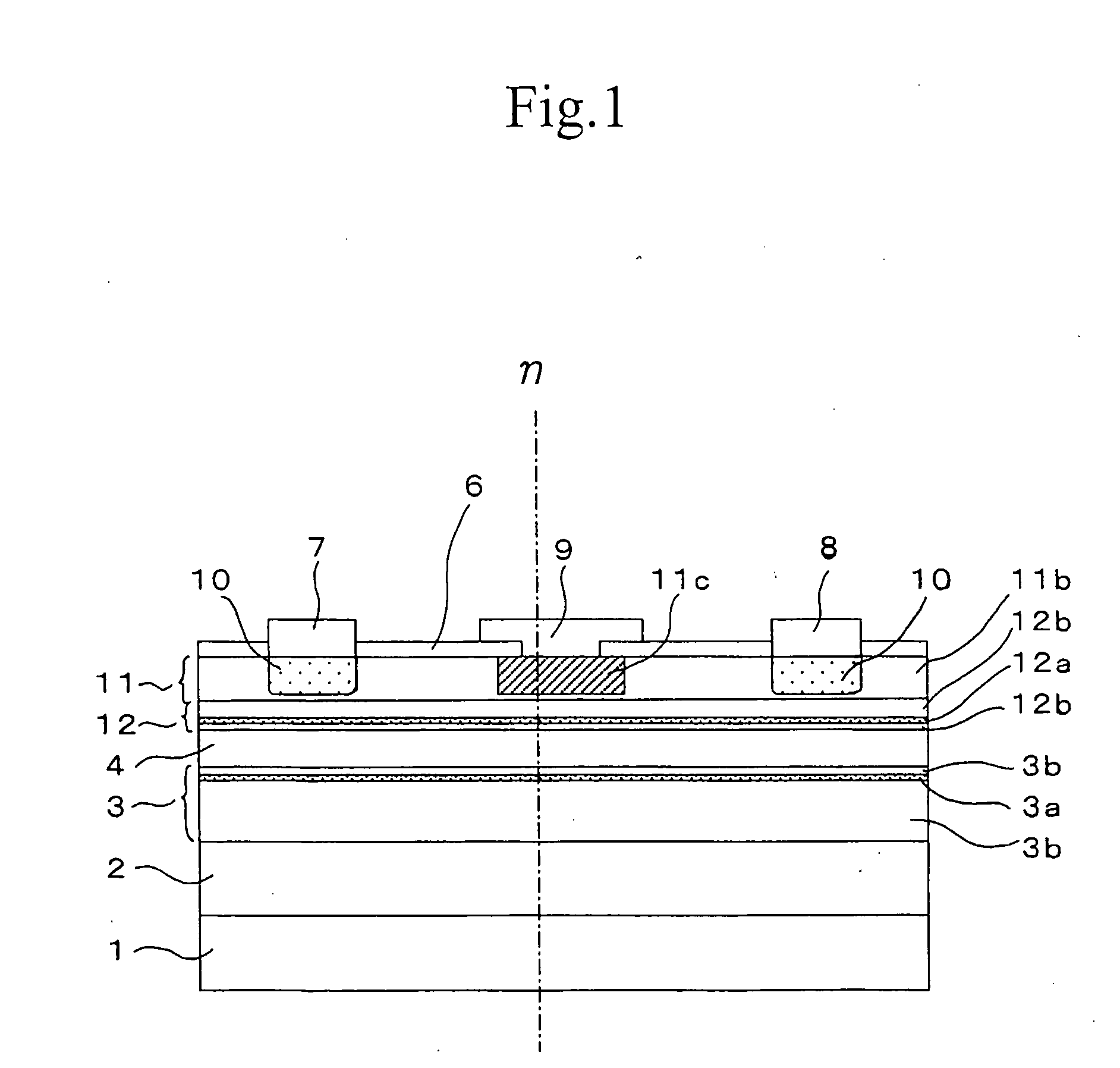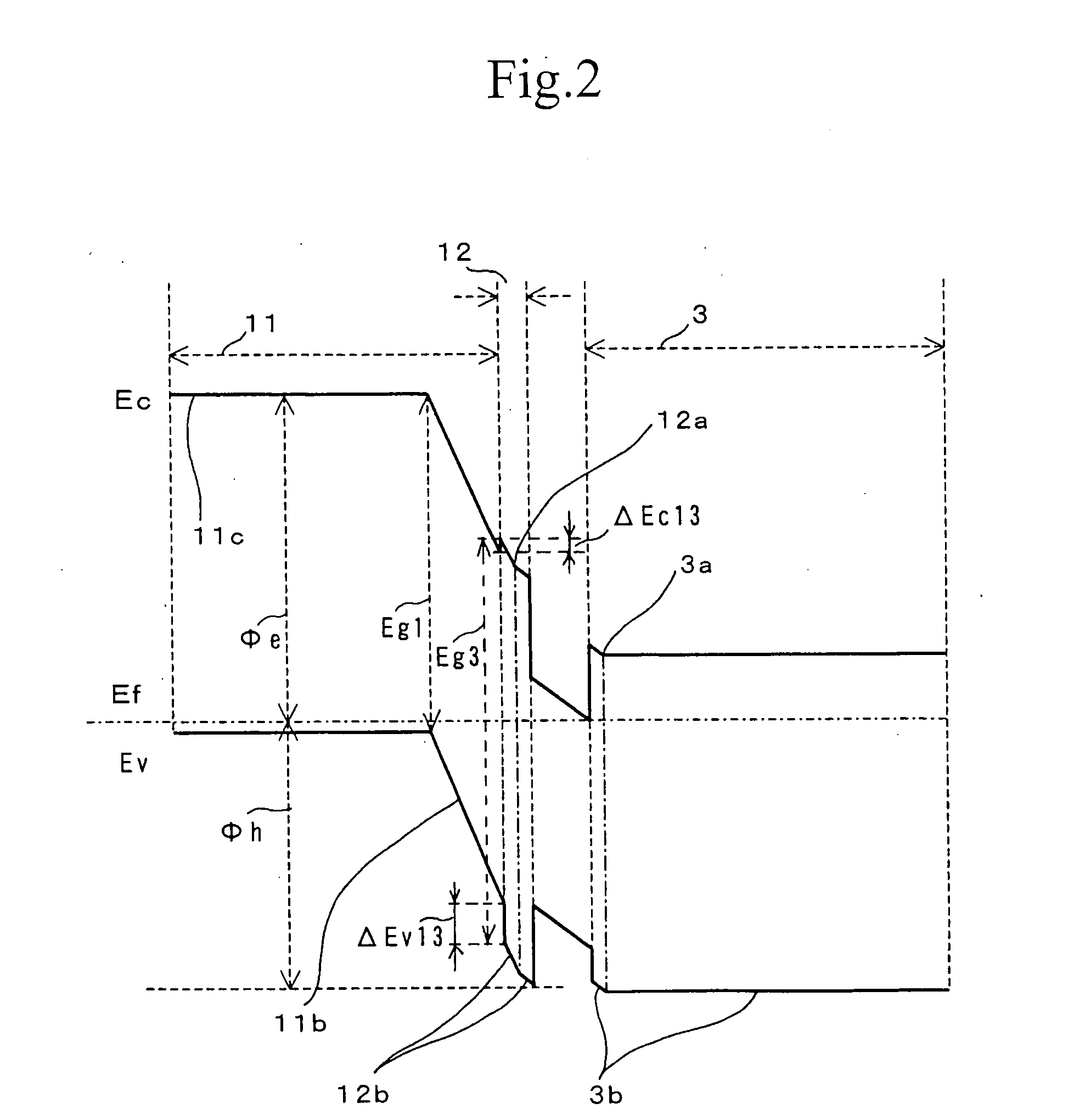Semiconductor device
a technology of semiconductors and devices, applied in the field of semiconductor devices, can solve the problems of reducing the performance of pae under the low distortion condition, reducing the efficiency of the device, and difficult to obtain the low distortion, etc., and achieve the effect of facilitating the control of the zn diffusion
- Summary
- Abstract
- Description
- Claims
- Application Information
AI Technical Summary
Benefits of technology
Problems solved by technology
Method used
Image
Examples
second embodiment
[0051] The next paragraphs will describe the second embodiment of the semiconductor device of the present invention referring to FIG. 3. In comparison with the first embodiment, this embodiment further comprises a fourth barrier layer 14 not intentionally doped with any impurities, between the third barrier layer 13 and the channel layer 4.
[0052] The third barrier layer 13 uses a material satisfying the relation (1) with the first barrier layer 11, similarly to the third barrier layer 12 in the first embodiment, and comprises an n-type impurity heavily-doped region 13a where n-type impurity such as Si is heavily doped, and low-impurity-concentration regions 13b not intentionally doped with any impurities.
[0053] The fourth barrier layer 14 uses a material capable of forming a desirable interface with the channel layer 4, which is typically AlGaAs having an Al composition ratio of, for example, 20% or around or less, or GaAs, not intentionally doped with any impurities. In this case...
third embodiment
[0055] The following paragraphs will describe the third embodiment of the semiconductor device of the present invention referring to FIG. 4. In comparison with the first embodiment, this embodiment does not have a region heavily doped with an n-type impurity in a third barrier layer 15, and further comprises, as being disposed between the third barrier layer 15 and the channel layer 4 a fourth barrier layer 16 having an n-type impurity heavily-doped region 16a.
[0056] The third barrier layer 15 again uses a material satisfying the relation (1) with the first barrier layer 11, similarly to the third barrier layer 12 in the first embodiment, but is not intentionally doped with an n-type impurity.
[0057] On the other hand, the fourth barrier layer 16 uses a material capable of forming a desirable interface with the channel layer 4 similarly to the second embodiment, such as AlGaAs having an Al composition ratio of approximately 20% or less, or GaAs for example, and typically comprises ...
fourth embodiment
[0059] The first embodiment may sometimes raise a problem in ohmic contact resistance between the first barrier layer 11 and the gate electrode 9. In this case, it is advantageous to dispose, on the gate electrode side as shown in FIG. 5, a fifth barrier layer 18 composed of a semiconductor which has a sum of the electron affinity and the band gap smaller than that of the first barrier layer 17.
[0060] The following paragraphs will describe the semiconductor device of the fourth embodiment of the present invention. In this embodiment in comparison with the first embodiment, the first barrier layer 11 is altered to a two-layered configuration comprising a first barrier layer 17 and a fifth barrier layer 18, wherein the fifth barrier layer 18, which is composed of a semiconductor having a sum of the electron affinity and the band gap smaller than that of the first barrier layer 17 is disposed between the first barrier layer 17 and the gate electrode 9.
[0061] The fifth barrier layer 1...
PUM
 Login to View More
Login to View More Abstract
Description
Claims
Application Information
 Login to View More
Login to View More - R&D
- Intellectual Property
- Life Sciences
- Materials
- Tech Scout
- Unparalleled Data Quality
- Higher Quality Content
- 60% Fewer Hallucinations
Browse by: Latest US Patents, China's latest patents, Technical Efficacy Thesaurus, Application Domain, Technology Topic, Popular Technical Reports.
© 2025 PatSnap. All rights reserved.Legal|Privacy policy|Modern Slavery Act Transparency Statement|Sitemap|About US| Contact US: help@patsnap.com



